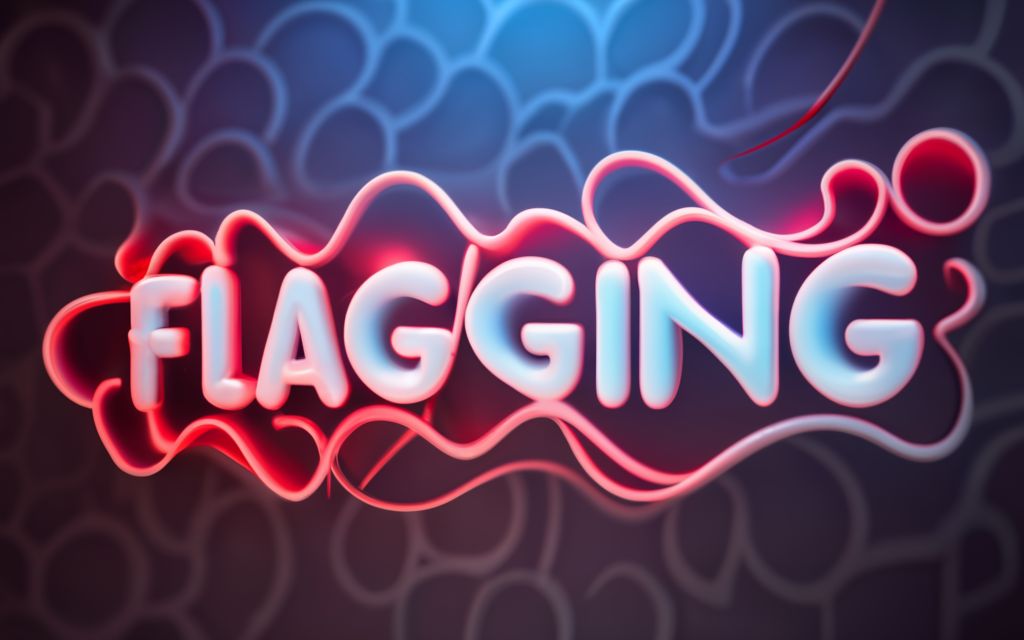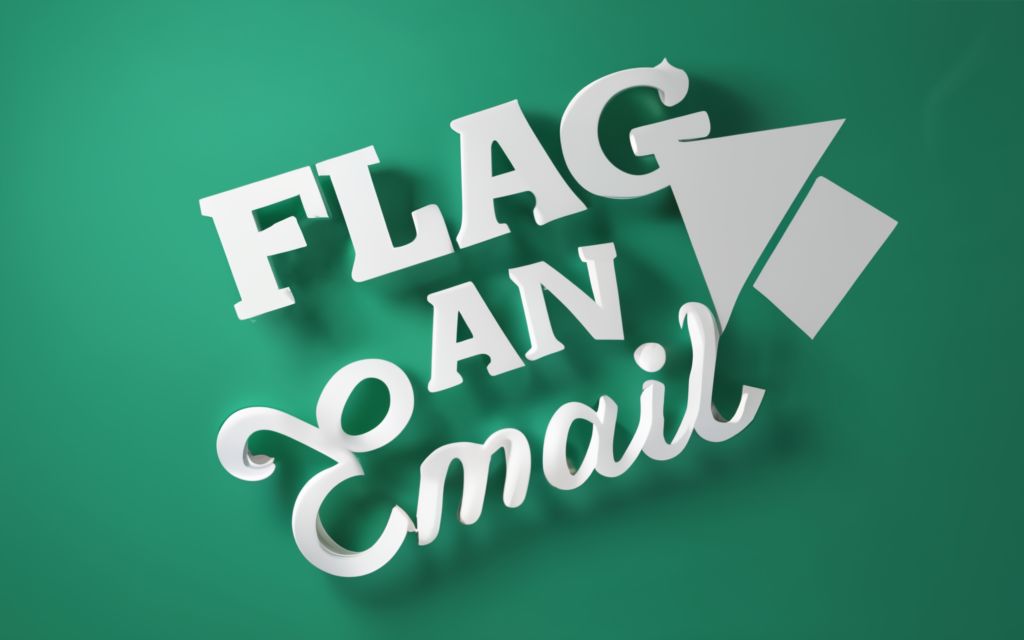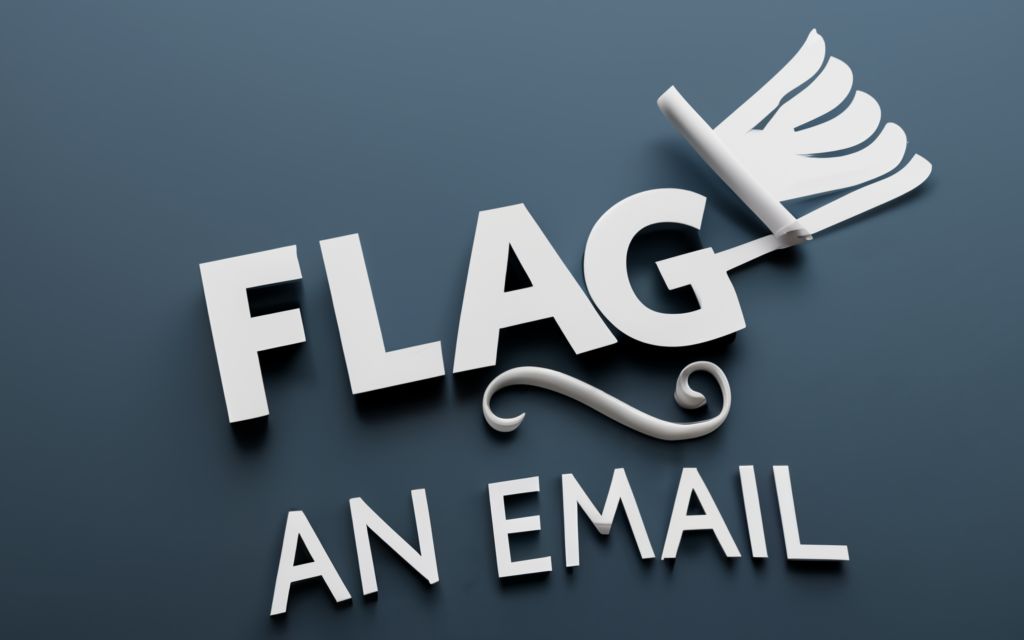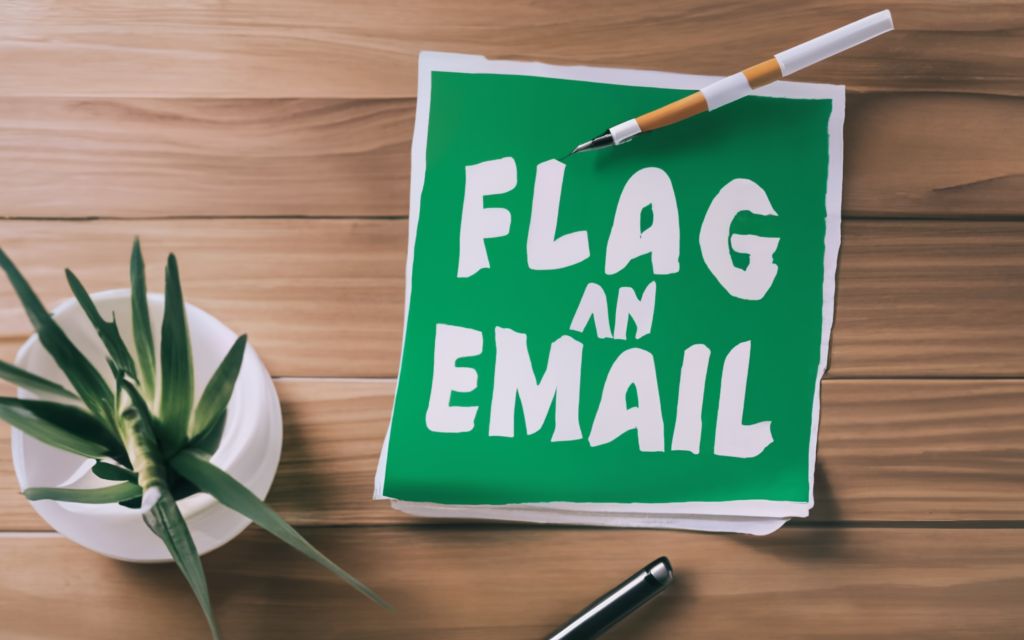Do you constantly feel overwhelmed, distracted, and stressed by your overflowing inbox? Do you worry about missing important messages that get buried? Email flagging can help. Flagging is a simple organizing feature that allows you to highlight your most essential emails so they don’t get overlooked. But what does it really mean to flag an email, and how do you use this tool effectively? This comprehensive guide will teach you everything you need to know about email flagging. You’ll learn how flagging boosts productivity, how to flag in every major email client, tips to manage flags like a pro, and much more. With these skills, you can declutter your inbox and focus on what matters most. Ready to become an email flagging expert? Let’s get started!
What is Email Flagging and Why is it Important?
Email flagging is an indispensable tool that allows you to mark messages for follow-up, categorize by importance level, and build task lists – all helping to boost your productivity and organization. But what exactly does it mean to flag an email? Here’s an in-depth look at email flagging and why it’s so useful.
What Does it Mean to Flag an Email?
When you flag an email, you’re essentially marking that message as needing attention or action on your part. It highlights the email and sets it apart from other non-flagged messages.
Some common reasons you may want to flag an email include:
- Marking a message as important – Flagging allows you to denote an email that should not get lost in the shuffle. Starring or flagging an important message ensures you review it promptly.
- Easy to find flagged emails later – Once flagged, emails are automatically grouped and viewable in a separate flagged mailbox or list. This makes it a breeze to relocate messages you’ve flagged when you need to refer back to them.
- Reminder to take action on an email – The flag serves as a cue that you must take some sort of action regarding that email. It may remind you to follow up, add a calendar event, forward information to someone else, or any number of tasks.
Common Uses and Goals of Email Flagging
People flag their emails for a variety of reasons tailored to their needs and priorities. Here are some of the most common goals and use cases for flagging emails:
- Flagging for follow up – A key purpose of flagging is to mark emails that need some type of follow up from you – a response, action item, or answering a question. The flag makes sure you loop back around to respond.
- Flagging important information – If an email contains important documents, details for a project, or other key information, you may flag it for easy access later on.
- Flagging emails that need a response – Any emails needing a reply from you can be flagged as a cue to respond. The flag draws your attention when it’s time to answer.
- Organizing your inbox – Flags allow you to group related emails on a certain topic or project. This keeps your inbox neatly organized.
How Email Flagging Helps Productivity and Organization
Flagging provides a wide range of productivity and organization benefits:
- Keeps track of emails needing attention – With flags, you can easily see at a glance which emails require action on your part. This helps you avoid dropping the ball.
- Prioritizes important messages – Flagged emails stand out visually, so you’re naturally drawn to the higher priority messages first.
- Allows you to build a simple to-do list – Flagged emails essentially serve as a lightweight, built-in task list. You can break down your day based on flag colors and categories.
- Prevents losing track of time-sensitive emails – Flagging emails with deadlines or critical information prevents them from getting buried and forgotten.
Beyond those core benefits, advanced users can amplify the usefulness of flagging by color coding flags for different purposes, using flags to turn emails into calendar appointments, and more.
Overall, flagging gives you control over your inbox, providing organization and ensuring emails don’t slip through the cracks – both of which make you far more productive. Rather than emails managing you, flagging puts you back in charge of your email workflow. Give it a try and see if it helps you take back control of your inbox!

How to Flag an Email in Different Email Clients
Email flagging is a handy feature available in most major email services and apps. However, the specific steps to flag a message can vary depending on which email client you use. In this section, we’ll break down exactly how to flag emails in Gmail, Outlook, iPhone’s Mail app, Yahoo Mail, and more.
Flagging Emails in Gmail
Gmail is one of the most widely used email services, making it important to understand how flagging works there. The flagging feature in Gmail is called “starring” rather than flags. Here’s how it works:
- Starring an email marks it as important – When you star a message in Gmail, it flags that email and denotes it as being important or needing follow up. Starring achieves the same purpose as flags in other services.
- Starred emails appear in the Starred tab – Once an email is starred in Gmail, it will automatically be grouped under the Starred tab. To see all your flagged emails, simply click the Starred tab and they will be viewable there.
To star an email in Gmail:
- Open the Gmail app or go to mail.google.com
- Locate the message you want to flag in your inbox
- Click on the empty star icon next to the email or conversation
- The star will turn gold, indicating it is now flagged
You can also access starred emails by clicking the gold star icon near the search bar. This lets you toggle between the Starred view and your regular inbox.
Starring emails is a key way to stay on top of priority messages in Gmail. Take advantage of it as your go-to flagging method.
How to Flag in Outlook
Outlook also offers flexible options for flagging emails right from your inbox. Here are two easy ways to flag in Outlook:
- Right-click and select Follow Up – When viewing your inbox, right-click any message you want to flag. In the drop-down menu, select Follow Up. This will open options to pick a flag, due date, and reminder.
- Choose a flag icon like the exclamation point – When you select Follow Up, you can pick different flag icons to represent different meanings. The red exclamation point is for important timely messages, while the green check is for items you completed.
Other ways to flag in Outlook include:
- Clicking the flag icon in the message list to auto flag it for tomorrow.
- Right-clicking the flag column on a message to pick a custom flag date.
- Opening the message and going to Actions > Follow Up > Add Reminder
Take a bit of time to explore the different flagging options so you can find the Outlook flagging workflows that fit your style.
Flagging Emails on iPhone’s Mail App
The Apple Mail app on iPhones and iPads also lets you flag messages. Here’s how to do it:
- Open the email, tap Reply, then select Flag – Apple chose to tuck the flagging options under the Reply menu. Open any email you want to flag, then tap Reply. From there, tap the Flag option at the top.
- Choose a color to categorize the flag – The Mail app lets you pick flag colors to create categories for your flags. Red could mean time-sensitive, while yellow is for family emails, for example.
After flagging an email on iPhone, you can view all flagged messages by going to the Mailbox tab » Edit » Flagged. This sections shows all emails you have flagged for easy access.
Bonus Tip: If you use Gmail through the Mail app on your iPhone, you can also star emails like normal by going to the inbox and tapping the star icon.
Flagging in Yahoo Mail
The steps to flag an email in Yahoo Mail include:
- Hover over the email and click the flag icon – When viewing your inbox, hover your mouse over any message. A flag icon will appear on the right side. Click this flag icon to mark the message.
- Click the flag symbol to undo a flag – If you change your mind and want to unflag an email, just hover over it again and click the flag a second time. This will remove the flag.
To see your flagged emails in Yahoo Mail, click the folder icon in the left sidebar and select Flagged. This section collects all flagged messages for easy review.
That covers the quick steps to flag emails in the top email providers. Now that you know the basics, you can begin flagging messages across your different inboxes. Use flags consistently to ensure you stay organized and on-top of priority emails, no matter which client or device you use.

What Happens When You Flag an Email?
You now know the basics of how to flag emails in various clients. But what actually happens behind the scenes when you flag a message? Here’s an overview of the key effects of flagging an email and how it impacts your inbox.
Email Appears in Special Flagged Folder or View
The primary effect of flagging an email is that it will be grouped into a separate flagged email section of your inbox. This makes all your flagged messages easily accessible in one place.
- Easy to see all flagged emails in one place – Rather than having flagged emails mixed in with your regular messages, they will be pulled out and viewable in an exclusive flagged emails section. This allows you to review priority messages without sorting through non-flagged emails.
In Outlook, flagged emails appear in the To-Do bar, Tasks, and Daily Task List. In Gmail, they are visible in the Starred tab. Other providers have similar dedicated areas for flagged emails.
Being able to view flagged emails together chronologically is an enormous organization perk, as you can handle them by oldest or newest.
Reminders and Notifications
In addition to grouping flagged emails, some email clients take the additional step of sending you reminders about your flagged messages:
- Some clients give notifications about flagged emails – When you flag an email in Outlook, for example, you can pick a reminder time. Then Outlook will send you a desktop notification at that date/time to remind you to follow up on that flagged message.
Other providers like Gmail allow you to configure email notifications to receive daily or weekly recaps about your flagged emails.
Leverage these notifications to ensure you review flagged messages promptly and don’t let them fall through the cracks.
Flagging for Recipients
A lesser known trick is that you can configure flags in some email services like Outlook so they are visible to recipients of your emails, not just yourself. Here’s how it works:
- Lets recipients know the email needs attention – By enabling flags for recipients, an email you send shows a flag in the recipient’s inbox too. This signals to them that the message requires priority action.
To flag an Outlook email for recipients:
- Before selecting Send, go to the Message tab and select Follow Up > Custom
- Check the “Flag for Recipients” box and pick a due date
- The recipient will see the flag in their inbox as well as yours
Coordinate with recipients first before enabling this feature, as some may find flags distracting or unnecessary if overused. But when used judiciously, it can be an effective way to highlight priority emails requiring quick responses from recipients.
In summary, flagging an email has a range of effects, from grouping emails to sending reminders and making sure recipients give flagged messages proper attention. Make the most of these benefits to stay on-top of your inbox!

Tips for Managing Flagged Emails
Now that you’re a pro at flagging emails, let’s look at some power-user tips and best practices for managing flagged emails like a pro. Applying these tips will ensure you get the maximum mileage from email flagging.
Use Color-Coding and Categories
If your email client allows multiple flag colors, take advantage of them to color code and categorize your flags based on meaning and priority:
- Color code flags for different purposes – For example, use red only for truly time-sensitive emails. Yellow can denote emails from your boss or important clients. Blue flags could be for delegation emails where you’re waiting on someone else.
Color coding gives an at-a-glance view of your flagged emails so you know which to tackle first based on priority and meaning.
Here are some common color coding schemes:
- Red – Time sensitive, critical action needed
- Orange – High priority
- Yellow – From important people like your manager
- Green – Forwarding or delegation emails
- Blue – Low priority follow up
Get creative with flag colors to develop systems that work for your needs. Just be consistent once you implement a scheme.
Regularly Review Flagged Emails
Don’t let flagged emails languish for too long without reviewing them. Get into a habit of regularly checking flagged emails to ensure nothing falls through the cracks:
- Check flagged emails daily or weekly – Set aside 5-10 minutes each morning or afternoon to scan newly flagged emails. For a lighter approach, briefly review all flagged messages at the start of each week.
Set reminders if you have difficulty remembering to check flags. Staying on top of them daily or weekly limits how much piles up.
Unflag Emails When Resolved
Be diligent about unflagging emails once you’ve taken care of them or they no longer need action:
- Clears clutter and keeps flagged list relevant – If flags never get removed, you’ll end up with an unwieldy list of irrelevant old flags. Prune resolved flags so your list remains focused.
Get into the rhythm of unflagging an email immediately after you finish the needed action, like replying or scheduling an event.
Turn Flags Into Calendar Events
For flags needing action on a certain date, convert them into calendar events or tasks with due dates:
- Helps ensure you follow up on time – If an email says “Let’s meet next Tuesday,” flag it, then create a matching calendar appointment. Connecting flags to tasks or appointments makes it harder to be late.
Bonus Tip: Some apps like Boomerang even let you convert a flagged email into a calendar event right from your inbox with a click. Look into apps that integrate calendar events with flagged emails for maximum organization.
Other Flag Management Tips
- Use flags sparingly to avoid flag overload. Flag only your most important emails.
- Sort flagged emails by date to tackle oldest first.
- Schedule time on your calendar to process flagged emails.
- Turn off notifications if you find them distracting.
- If allowed, create custom preset flags like “Awaiting Reply” for common scenarios.
- Set reminders when flagging so you aren’t late on important replies.
- Only flag emails requiring YOU to take an action. Don’t flag FYI emails.
Follow these tips and you’ll have a simple yet effective system for staying on top of flagged emails. The time invested will pay off in spades via increased productivity and reduced stress.
Pros and Cons of Email Flagging
Email flagging clearly has a multitude of benefits. But are there also any downsides or risks associated with flagging emails? In this section, we’ll look at the key upsides as well as some potential cons to be aware of.
Benefits of Flagging
There are good reasons email flagging has become a staple feature across all major email platforms. The upsides are numerous:
- Improved organization – Flagging lets you segment your inbox and adds structure. All related flagged emails are grouped together for easy access later.
- Emails don’t slip through the cracks – Flagging creates a safety net ensuring you handle important emails that require follow up. Flags keep them on your radar.
- Allows for productivity focus – Flagging helps you quickly identify priority emails so you can focus your limited time on messages that matter most.
In addition to those main benefits, other advantages include reduced stress, better time management, and increased accountability with email communications. The bottom line is that flagging supercharges your productivity.
Potential Drawbacks
However, flagging does come with a few potential disadvantages to keep in mind:
- Can lead to clutter if overused – Applying flags with abandon can create an unwieldy number of flags you then need to manage. Use flags judiciously on your highest priority emails only.
- Too many flags reduce prioritization – When every email is flagged urgent, none of them feel important. Limit flags so only truly high priority emails have them.
Additionally, some users report feeling stressed out by seeing too many flagged emails accumulate. Flags also add some maintenance work in needing to unflag resolved messages.
The key is flagging in moderation. Be selective about only flagging emails that significantly impact priorities, free time, or finances. Avoid flagging messages where you are just FYI or low priority follow up is needed.
Balancing the Pros and Cons
On the whole, the immense benefits of properly leveraging email flagging far outweigh the potential downsides:
- Flags provide insurance against missing important emails.
- They help focus your time on productive priorities.
- Flags add structure that reduces inbox chaos.
To maximize the positives while avoiding the negatives, be selective about which emails you flag and keep on top of managing flags when no longer needed. Used properly, flagging supercharges productivity and organization.

Email Flagging vs Stars, Read Receipts, and Threading
Now that you understand the core functionality of email flagging, how does it compare to other inbox organization features like stars, read receipts, and message threading? Here’s a quick rundown of how flagging fits in alongside these other email capabilities.
Difference Between Flags and Stars
You may have noticed that some email services use “stars” while others use “flags.” What’s the difference?
- Mostly interchangeable terms – Flagging and starring serve the same purpose of marking emails as important. The terms are used interchangeably in most contexts.
- Gmail uses stars instead of flags – The main exception is Gmail, which employs starred emails rather than flagged emails. But the functionality is identical – starring emails marks them for follow up.
Whether referred to as a flag or star, the important thing is that the feature allows you to highlight emails that need attention. Don’t get caught up on the terminology – flags and stars accomplish the same thing.
Read Receipts vs. Flagging
Read receipts and flagging work differently:
- Read receipts track email opens – Read receipts notify you when an email you sent is opened by the recipient. It tells you your email was seen.
- Flagging tracks messages needing action – Whereas flagging is for emails you need to act on in your own inbox. Flagging denotes follow up needed on your end.
While they work differently, read receipts and flagging both increase accountability around emails. Use them together when appropriate.
Flagging Individual Emails in Threads
Most email services now group messages into conversations or threads. But you can still flag individual emails within those threads when needed:
- Can flag specific messages in threads – If an important update occurs in the middle of a long email chain, flag just that message rather than the whole thread.
- Keeps long threads organized – Flags let you track key messages buried deep in long chains that would otherwise be hard to find again.
So don’t feel you need to flag an entire thread just because one message is important. Surgically flag individual emails in threads to stay organized.
In summary, flagging integrates seamlessly with other email organization features like stars, read receipts, and threading. Use flagging to mark the specific messages most deserving of your attention within busy inboxes and threads. Combined properly, these features can help you achieve inbox zero!
Using Other Tools and Apps to Manage Flagged Emails
Your email service itself provides the basic flagging tools you need. But you can expand the usefulness of flagging further by integrating your inbox with other productivity apps. Here are some ideas.
Task Managers and To-Do List Apps
Email flagging marks messages that need future action. So it makes sense to connect flagged emails to your favorite task and to-do list managers.
- Integrate flagged emails with task apps – Tools like Any.do](https://www.any.do/) and [Todoist let you forward an email to your task list with a click. This creates a new to-do item based on the flagged email.
- Convert message to calendar events – Apps like Boomerang Calendar neatly integrate your calendar and email, allowing you to convert any flagged email into an event with a click.
Taking those extra steps ensures you have flagged email tasks on your radar outside your inbox too.
CRMs and Follow Up Tools
If you deal with lots of email from clients and leads, CRMs like Salesforce let you connect flagged emails to relevant customer records and contact profiles.
- CRMs attach flagged emails to contacts – Forwarding a flagged message to your CRM automatically links it to the associated contact. This provides a complete history when following up later.
- Enable tracking responses and tasks – CRMs make it easy to track replies received, follow up emails sent, and tasks completed from any flagged email chain.
So if you regularly flag emails from prospective clients, integrate your CRM for more robust tracking and communications oversight.
Other Integrations
Here are some other ways to expand on basic email flagging:
- Use Slack integrations that notify your team when you flag important emails.
- Configure custom browser extensions that auto-flag emails based on senders or keywords.
- Connect IFTTT applets to automatically create calendar events for flagged emails.
- Use Zapier to forward flagged emails to a Trello board for project management.
Don’t feel limited strictly to the flagging tools within your email system. With a bit of creativity, you can build more robust workflows that connect flagging to your other software and productivity systems.
The benefits of flagging multiply when you use it alongside other apps that keep you organized and accountable. Try some out!

Key Takeaways on Email Flagging
Email flagging is one of those inbox features that may seem straightforward on the surface, but has immense depth when fully utilized.
Let’s recap some of the key lessons for making the most of flagging:
- Use flag colors consistently – Flag colors allow you to categorize the reason for the flag. Develop a color coding system for common scenarios.
- Only flag truly important emails – Don’t flag every message or flags lose their power. Reserve them for your highest priority emails.
- Stay on top of managing flags – Prune flags once resolved and get in the habit of regularly reviewing flagged emails.
- Connect flags to other tools – Expand the utility of flagging by integrating task apps, CRMs, Slack, and more.
- Use flags to build to-do lists – Let flagged emails serve as an automatic to-do list of your most important action items.
- Customize flags when possible – Take advantage of options for date-based reminders, custom presets, and recipient visibility.
- Focus on flagged emails first – Let flags guide you in tackling your most important emails each day.
Email flagging is one of those simple-yet-powerful features that takes your inbox from messy to managed. Apply these tips and you’ll see your productivity transform as you master the art of flagging.
Here are some frequently asked questions about email flagging:
Frequently Asked Questions About Email Flagging
How many emails should I flag?
Avoid flagging every email. Flag only your highest priority and most important messages requiring quick action. As a rule of thumb, flag no more than 10-20% of emails.
When should I unflag an email?
Unflag emails as soon as you’ve completed the needed action, like replying or scheduling an event. Don’t let flags pile up endlessly.
What’s the difference between flags and stars?
Flags and stars accomplish the same purpose. The terms are used interchangeably, except Gmail uses stars rather than flags.
Can I flag emails on my phone?
Yes, all the major mobile email apps like Gmail, Outlook, and Apple Mail allow you to flag or star messages right from your smartphone.
Do recipients see when I flag an email I sent them?
By default, no. But some email services let you enable options so recipients also see your flags. Coordinate expectations first.
How do I view all flagged emails together?
Most inboxes have a dedicated Flagged or Starred folder/tab collecting all flagged messages in one place. Check there.
Is flagging available in web mail clients too?
Yes, flagging works the same in browser-based email as it does in desktop and mobile apps. All major webmail services support flagging.
Can I create my own custom flag labels?
Some providers allow custom flags, but most have preset options like “Follow Up” or color-coded flags to categorize emails.
Do flags automatically sync between devices?
In most cases, yes. Flagging an email on your phone will also flag it on your desktop, with flags staying synced.
Still have questions? Let me know and I can expand this FAQ section further to cover additional common email flagging questions.

